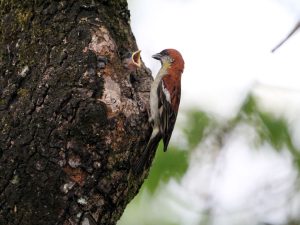
On the 20th of March every year, birders and conservationists alike observe “World Sparrow Day”, a day earmarked to raise awareness about the humble house sparrow (Passer domesticus). The idea for this designated day began in 2010 under the initiative of Mohammed Dilawar, a conservationist from Nashik, Maharashtra. His reasoning behind bringing attention to a common species like the house sparrow was that wildlife conservation should start in our backyard before we begin to think of larger, more exotic fauna like the Bengal tiger (Panthera tigris tigris) or the Asian Elephant (Elephus maximus), for example. His aim was to elicit engagement with local urban biodiversity and the threats they face within such environments.
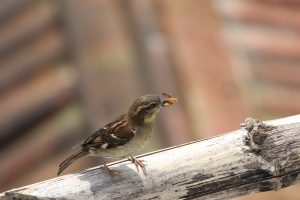
At the time of inception of this day for sparrows, there had been several reports of the decline of house sparrow populations in urban areas where previously they had been a constant presence around people’s homes. This was found to be true not only in India, but particularly so in the so-called “developed world” like in the UK and parts of Europe. Dramatic reasons were put forth for this decline, such as the installation of cellphone towers. However, as is often the case, the more important reasons were far more banal, but pernicious – a loss in nesting sites when people’s homes changed from thatched and eaved roofs to wall-to-wall concrete, a reduction in food availability when land used for growing crops were “reclaimed” to make space for new buildings, or an increase in the use of pesticides, such as Dichlorodiphenyltrichloroethan
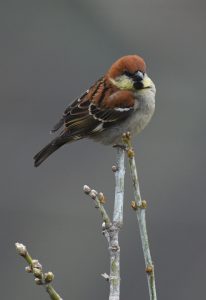
Here on the Meghalaya plateau, where we are more likely to find Eurasian tree sparrows (Passer montanus) and, less commonly, russet sparrows (Passer cinnamomeus) than the plains-dwelling house sparrow, the message remains the same – take stock of the life around us and make space for it before we lose it all in our quest for material gain.
Urban areas in Meghalaya have grown significantly in the last two decades. Anecdotally, one can see how Shillong itself has become choked with traffic, and has been losing its green areas to urban development projects that have expanded well into its suburbs like Mawïong, Mawdiangdiang, Laitkor, Mawpat or Upper Shillong. All the while, we’ve also seen how the heart of the city has become more concrete and cluttered with buildings, leaving little space for gardens, let alone trees. The trees and plants that we do see being planted are often ornamental varieties, such as Araucária heterophylla or Jacaranda mimosifolia, that offer little to our native birds and bees in terms of food or refuge. Our Umkhrah floodplain and paddy-field, aka Pynthor, has changed to sprawling, sealed concrete devoid of life. A common result of such urban growth in Indian cities is also a loss of our rivulets and streams, changing from the fantastical abodes of wood and water nymphs of yore to dead and dirty drains.
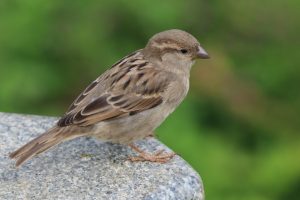
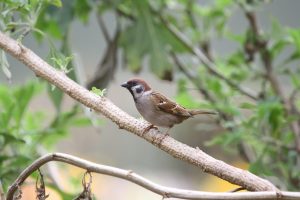
Yes, it is imperative for our society to grow and thrive. It is a fundamental human right to have opportunities to make a home, and to make a decent living. However, the message of World Sparrow Day urges us to also be mindful of the non-human lives that we share our space with. It is to our own detriment that we ignore the well-being of birds, insects, mammals, fish, frogs, or plants for that matter. The consequences of such callousness are stark and clear. I’m sure many are personally well-acquainted with the lack of water that we face in Shillong over the dry winter period. Where once springs and streams would flow freely, in the land with the heaviest amount of rainfall in the world, we now have to buy water to meet our basic needs! In winter, our people choke with the smoke from forest fires and burning waste. We cannot ignore the fact that the fundamental necessities, like clean air and water, and all the raw materials we need for any economic growth are rooted firmly within the natural world.
This brings us back to the idea of being mindful in our yearning for progress and how it affects not only non-human lives but of ours as well. We need not follow blindly in the footsteps of those in the so-called “developed” western world which is now desperately trying to rewild its denuded and degraded landscapes. No, instead we can learn from their mistakes and pay attention to the wealth of nature around us. By ensuring that we move forward conscientiously and having coexistence with nature in our mandate for economic development, we will safeguard a future that is bright not only for ourselves, but also to our children and grandchildren for whom we hold this world in stewardship. Trust the little sparrow to show us the way.
– Ezra Lawanker Rynjah



